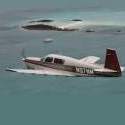Encore newbie questions
-
Members Online
- Parker
- mhrivnak
- MikeOH
- Gilt
- jamesyql
- redbaron1982
- acekng1
- 76Srat
- FlyingScot
- dkkim73
- Oscar Avalle
- A64Pilot
- Ibra
- Vulcan81
- ElkoRandy20J
- DXB
- Marcopolo
- Jim Peace
- 201Mooniac
- Flyler
- Stan
- PeteMc
- kaba
- TangoTango
- gabez
- Fix
- Tim VanDenHoek
- Mister_Bevilaqua
- TreetopMooney
- Aerodon
- Hank
- jrwilson
- George Braly
- milotron
- GeeBee
- PeterRus
- Lincoln
- joepilotmooney


Recommended Posts
Join the conversation
You can post now and register later. If you have an account, sign in now to post with your account.